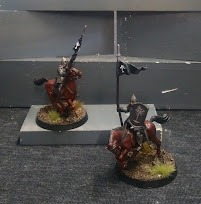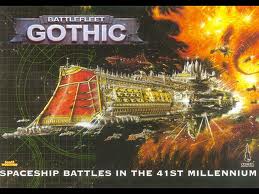I've generally been discontented with aerial wargames; generally decrying excessive complexity, slow play, recording, and old fashioned mechanics. I made a manifesto identifying factors like energy management (potential vs kinetic vs position to foe), detection, pilot skill and aircraft performance as key elements.
I kinda identified an aim to move away from traditional mechanics, such as movement templates, pre-plotting, special movement rulers or cards etc in favour of simplified movement. But I don't think I went far enough.
At the core, the issue is air combat is relatively complex, and it is always harder to abstract and simplify than it is to add in extra detail. In addition, unless you play a 1 v1 duel between two aircraft, the game will have an issue with micromanagement; say you control 4, 6 or as dozen planes - you are a flight or squadron leader; and as such should not be micromanaging the exact throttle and stick inputs of every jet, even if it was feasible. It should give the broad 'feel' and 'decisions' of air combat, but stay simple.
Instead of looking at flying wargames for inspiration, I'm looking at skirmish wargames - games like Mordhiem, Malifaux, Infinity. I'm trying to divorce myself from the temptation to piggyback existing air wargame rules. I want a fun, fast game to play with my 1:600 jets!
Tumbling Dice 1:600 are fun to paint and characterful playing pieces.MOVEMENT & MANEUVER (aka Positioning relative to foes)
Movement is a key area to abstract. It cannot be much trickier than a skirmish wargame. There should be no charts or anything that needs memorizing. Minimal recording and token litter.
I'm going to have a few speed levels - "Thrust" representing subsonic maneuvering, mostly based on power-to-weight, and "Sprint" representing sustained straight line speed (loosely based on maximum Mach) a bit like "walk" and "run" speeds in skirmish games.
Normal move = plane can pivot up to 90d and move up to "Thrust"(fairly high-G maneuvers). This would be a 4-8" move for the average jet.
Reversal = plane can pivot 90-180d and move up to half "Thrust" (Split S, Immelman)
I'll probably give planes a minimum movement of 1" to give a sense of momentum. The reversal probably needs some sort of penalty or dice roll to pass to stop planes pivoting on the spot too freely.
Sprint = plane moves Sprint distance; maybe can make a 90d turn after half the move; G forces means it cannot turn too sharply. This is a shallow dive, or afterburn with only shallow turns. This would be a 6-12" move for the average jet. Movement distances are similar to 28mm '40K' style traditional wargames.
Planes can freely move between these two moves without any tokens or recording. As you can see, you could explain it to someone and they could remember it without referring to a chart or rulebook; no fancy movement rulers are needed.
I may add to this, but I'm trying to resist the urge to complicate matters. We are squadron or flight leaders giving general instructions - "break left!" "evade!" - not micromanaging each plane with precise inputs.
Actually an "Evade" move seems a reasonable addition. For simplicity, it is like a normal move (90d+Thrust), but there is some sort of penalty to perform it and it gives defence bonuses. This represents barrel rolls and scissors etc.
Hmm, so far this is somewhat similar to my 2019 efforts, albeit a bit simpler.
Now for a bit of a deviation.
Now, I'm going to go into RPG and skirmish wargame territory. We're going to abstact height and speed into a single resource "Energy" aka a Stamina bar. I'm actually thinking of adding "Suppression" aka Pilot Focus or Stress - representing a pilot's multi-tasking, coolness, awareness. Some games might have Action Points or a dice pool for this, but I'm toying with the idea of a "Suppressed/Pinned" state from land wargames, where the pilot is stressed out of his brain and can't cope; only able to evade or do basic stuff. More on that later.
ENERGY MANAGEMENT (aka Height vs Speed vs Positioning)
Okay, here's our first token or recording. A counter placed under the base; Red is low energy (low and slow), Blue is high energy (high and fast). Normal energy, the default, has no token at all, hopefully reducing the tokens. We're not recording height and speed separately - we're combining them.
I wouldn't do this for a WW1 biplane game, but with the climb rates and thrust/weight of jets, I feel the granularity can be sacrificed. The idea is energy is a resource you can 'spend' to gain better position.
Let's make some maneuvers cost energy.
A high speed Sprint will cost energy. A Reversal will cost energy. You need to 'spend' energy to go faster or change facing radically. You drop a level - from high to normal, from normal to low. A low energy fighter has limited maneuvers.
I'm toying with the idea of splitting the Reversal into two; making the normal Reversal "free" (yoyo, Immelman) which costs no energy, and a "energy" Reversal which allows you to move your full thrust after pivoting 90-180d (split S, diving turn) but costs an energy level; basically trading height to retain speed. Too complex?
Well, so far we have only 1 token beside the plane (in many cases, for normal energy, none at all). No recording. I've covered the effect of most basic fighter maneuvers.
I'm a bit sad to abstract height away completely, maybe I'll add another token (green?) "On the Deck" for planes who are skimming low to avoid radar. This could make them hard to detect and attack, but make any accident/loss of control fatal? Risk vs reward... Not sure if I want another token possibly cluttering things as I'm trying so hard to avoid them - is it worth it?
By abstracting the rules, we can handle 4-12 planes at a time, rather than a 1 v1 duel best suited to a PC game... Aka we can play with more toys on the table!DOGFIGHTS & SCALE (Melee?!)
I haven't mentioned any scale. Some rules say 1 hex or 2" or whatever is exactly 500m, and vertical levels are 250m, and each turn is 3 seconds... I can't afford that sort of precision. We're assuming pretty broad movements; the pilot is steering the plane, you the wargamer are not precisely positioning it; rather giving general instructions.We can however assume 1-2" or a hex is more kilometres than metres.
Following my "copy skirmish wargames rather than 1970s air wargames" I'm going to treat dogfights as a melee!
Once a jet moves within 2"/hex/base length of another jet, a dogfight (melee) is triggered. As soon as this happens, movement is paused (a bit like minis having a "zone of control.")
The player who moved into melee dogfight declares if he wishes to attack or evade, then the non-active player declares if he wants to attack or evade. (Not sure which order atm).
Both players make a contested roll. (Dice + 'agility' stat of some sort)
Both Evade = active player can then continue its move unless it would bring either jet into each other's front arc. If this is the case, see "Evader beats Attacker" below.
Evader beats Attacker = loser pivots randomly, evader is faced 2" away anywhere in its 180 rear arc, facing away. Critical success = Evader chooses Attascker's facing first.
Attacker beats Evader = Evader pivots randomly, attacker is placed anywhere it chooses within 2" of its front 180d arc, facing the target. Critical success = Attacker is placed anywhere 2" within it's rear 180d arc, facing the target (Tailing).
Attacker 1 beats Attacker 2 = Loser pivots randomly, winner is placed anywhere it chooses within 2" of the loser's front 180 arc, facing the target. Loser can shoot back after winner, but at a penalty. Critical success = Winner is placed anywhere in loser's rear 180d arc, facing the target (tailing).
Okay, this is a bit jumbled and needs fleshing out/adjusting, but you get the idea. It's kinda a melee "dodge" or "pushback" that represents the winner of the wild maneuvers choosing its facing/relative position, and a critical success gives an optimum position. There's a bit of decision making in the dogfight.
How the 'pivot facing' random facing will work? - on a hex, it's easy with 1d6 giving the hex facings, but otherwise my jets have hex bases so I can go off that.
The dogfight is a swirling series of sharp, violent maneuvers. It obviously would cost
energy, and there would be some sort of penalty invoked.
Obviously there would be a bonus for having higher energy than the opponent, and also a bonus if it approached from the opponent's rear hemisphere or if undetected. A low energy plane would be at a significant disadvantage. We'll do modifiers to the contested roll; a -20% or +20% or so to taste. So your state before entering the dogfight matters - high energy, undetected aircraft will dominate regardless of base aircraft performance.
Well, looking at it we've pretty much got skirmish wargame movement (a la Mordhiem, Infinity) where it costs stamina to run, melee, or move to your rear, and a characterful melee system.
The upside: for a jet game, there is no recording, little token clutter, and easy-to-remember and fast paced action that could easily handle 6-12 minis, instead of charts, fancy rulers and writing down moves. We have 3 stats to remember; Thrust, Sprint, and Dogfight. But is it too simple?
From our initial aim: We've got some energy management (potential vs kinetic vs position to foe) and aircraft performance (Sprint, Thrust and Dogfight stats) in our rules so far. But we need to add and tie in detection (through activation, modifiers?), and pilot skill (through modifiers, 'focus'/multitasking - dice pool/action points/suppression, activation).





































